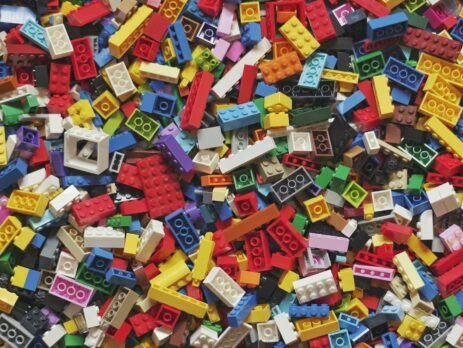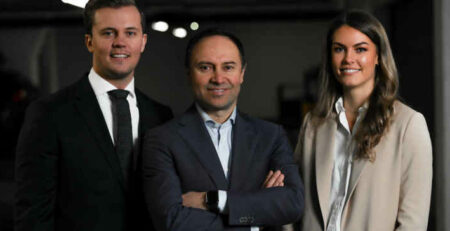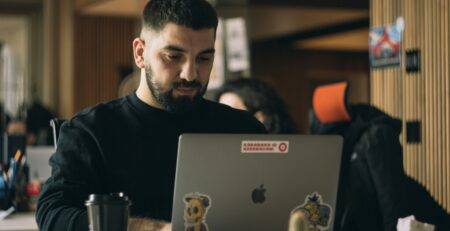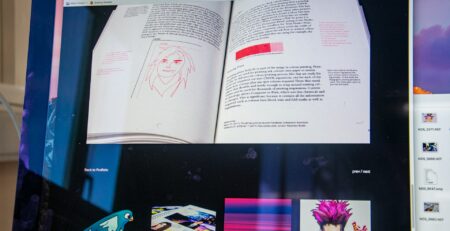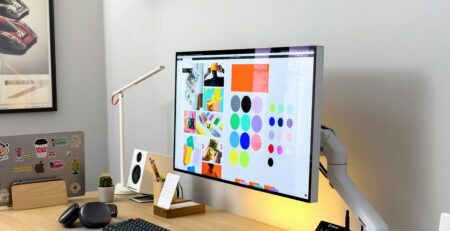Building Blocks of Success: Hiring Lego Model Designers
The process of hiring Lego model designers is both an art and a science, requiring a keen eye for creativity as well as a systematic approach to recruitment and team building. Lego model designers are pivotal in transforming simple building blocks into intricate models that capture the imagination of both children and adults. This role not only demands a deep understanding of design principles but also a passion for the Lego brand and its unique form of creative expression.
Companies looking to hire Lego model designers need to consider a variety of factors, including technical skills, experience in model building, and the ability to work as part of a team. The designers’ role is crucial in developing new products that are feasible, innovative, and marketable. They must balance aesthetic appeal with functionality, ensuring that each piece connects perfectly with another to bring complex designs to life.
Recruiting the right talent involves understanding the specific needs of your business and how prospective designers can meet these needs. It’s not just about finding someone who can build with Legos; it’s about finding a designer who can contribute to your brand’s narrative and engage with your target audience through their creations.
Moreover, the cultural fit is just as important as technical skills. Lego model designers often work in teams, and their ability to collaborate effectively with others is crucial. The hiring process should therefore include assessments not only of a candidate’s individual skills but also of their potential to work within a team dynamic.
Education and background can vary widely among successful Lego model designers. While some might have formal education in design, architecture, or engineering, others may come from entirely different fields, bringing fresh perspectives and innovative ideas. This diversity can be a strength, adding various dimensions to the creative process.
Once hired, the integration of these designers into your team is another critical step. Proper onboarding ensures that they understand their role, the company’s expectations, and how they fit into the larger organizational structure. Continuous training and development are also essential to keep the designers updated with the latest trends and techniques in Lego model building.
Assessing the work of Lego model designers can be subjective; however, clear criteria based on design quality, innovation, and alignment with project goals can help in objectively evaluating their work. Feedback should be constructive, aiming to foster growth and improvement.
Retention strategies are also vital. Recognizing and rewarding creativity and productivity can help in maintaining job satisfaction and loyalty among Lego model designers. Creating a stimulating work environment that encourages creativity and innovation is equally important.
In conclusion, hiring the right Lego model designers is crucial for any business looking to innovate in this unique field. It requires a balanced approach of assessing both creative and technical skills, along with a strong emphasis on team dynamics and cultural fit. By carefully selecting and nurturing talented designers, companies can continue to delight and inspire their audiences with new and imaginative Lego creations.
For more insights on hiring strategies, visit icreatives Find Talent.
Most Asked Questions About Hiring Lego Model Designers
- What qualifications should you look for in a Lego model designer?
- How do you assess the creative skills of a potential Lego model designer during an interview?
- What are effective strategies for integrating new Lego model designers into existing teams?
- How can companies encourage continuous innovation and creativity in Lego model designing?
- What are the challenges in managing and retaining skilled Lego model designers?
- How does the role of a Lego model designer evolve with advancements in technology?
- What impact do Lego model designers have on brand development and consumer engagement?

What qualifications should you look for in a Lego model designer?
When hiring a Lego model designer, the qualifications can vary significantly depending on the specific needs of the project or the company. However, certain core qualifications are generally sought after. These include a strong foundation in design principles, proficiency in using design software, and a proven ability to translate concepts into tangible models. Candidates with a background in architecture, engineering, or art may have an advantageous skill set due to their understanding of structural and aesthetic elements.
Technical skills are crucial, as Lego model designing often involves complex problem-solving to create models that are not only visually appealing but also functional and stable. Knowledge of computer-aided design (CAD) software can be particularly beneficial, enabling designers to plan and visualize their structures digitally before constructing them physically.
Experience is another important qualification. A portfolio of past projects can provide valuable insights into a candidate’s creativity and ability to complete projects successfully. This portfolio should ideally include a variety of designs that showcase the designer’s versatility and skill in working with different themes and scales.
Interpersonal and communication skills are also essential, as Lego model designers often work in teams. The ability to collaborate effectively with others, share ideas, and incorporate feedback is crucial in a team-oriented environment.
Lastly, a passion for Lego and model building can be a significant plus. This passion often drives designers to go above and beyond, pushing the boundaries of what can be achieved with Lego bricks.
For more detailed insights into assessing a candidate’s qualifications, visit Hiring Hourly Employees.
How do you assess the creative skills of a potential Lego model designer during an interview?
Assessing the creative skills of a potential Lego model designer during an interview can be challenging but is crucial for ensuring the right fit. One effective method is to conduct a practical test where candidates are given a set of Lego bricks and asked to construct a model based on a specific brief. This exercise can reveal not only their technical skills and understanding of Lego as a medium but also their ability to think innovatively and solve problems creatively.
Another approach is to discuss the candidate’s portfolio in-depth during the interview. Asking them to explain their thought process behind each design and the challenges they faced can provide insights into their creative thinking and problem-solving skills.
Behavioral questions can also be useful in assessing creativity. Questions such as “Can you describe a project where you had to think outside the box?” or “How do you overcome creative blocks?” can help in understanding how candidates approach creative challenges.
It’s also beneficial to ask about their inspiration and influences. This can indicate their breadth of knowledge and awareness in the field of design and beyond.
Lastly, feedback from previous employers or clients can be invaluable. References that speak to a candidate’s creative abilities and their approach to design tasks can provide a third-party perspective on their skills.
For more tips on conducting effective interviews, visit Guide to Video Interviews.
What are effective strategies for integrating new Lego model designers into existing teams?
Integrating new Lego model designers into existing teams requires a strategic approach to ensure smooth transitions and maintain team dynamics. One effective strategy is to have a structured onboarding process that includes detailed introductions to the company’s culture, ongoing projects, and team members. This can help new hires understand their role within the broader team and how they can contribute effectively.
Mentorship programs can also be beneficial. Pairing a new designer with a more experienced team member can facilitate knowledge transfer and provide the newcomer with a go-to person for guidance and support.
Regular team-building activities can foster camaraderie and help new members blend into the team. These activities should be designed to encourage collaboration and open communication.
Involving new designers in projects right from the start can also be a good strategy. This hands-on approach allows them to immediately start applying their skills and integrating with the team’s workflow.
Feedback loops are crucial. Regular check-ins and feedback sessions can help new designers understand areas where they are excelling and where they need improvement, aiding their integration and growth.For more on managing team dynamics, visit Community in the Workplace.

How can companies encourage continuous innovation and creativity in Lego model designing?
Encouraging continuous innovation and creativity in Lego model designing requires a proactive approach from companies. One key strategy is to foster an environment that encourages experimentation and risk-taking without fear of failure. This can be achieved by supporting R&D initiatives and providing resources for designers to explore new ideas.
Workshops, seminars, and training sessions can also play a crucial role in stimulating creativity. These platforms can be used to introduce new techniques, technologies, and trends that designers can incorporate into their work.
Collaboration with other creative professionals can bring fresh perspectives and inspire innovative ideas. Companies can facilitate this by organizing cross-disciplinary teams for certain projects or by partnering with external creative staffing agencies.
Recognizing and rewarding creative efforts is also important. Incentive programs that acknowledge innovative designs and solutions can motivate designers to push their creative boundaries.
Lastly, providing designers with time and space to pursue personal projects or passion projects related to Lego can lead to unexpected innovations that can be integrated into the company’s offerings.
For more on fostering innovation, visit Innovation During Market Downturn.
What are the challenges in managing and retaining skilled Lego model designers?
Managing and retaining skilled Lego model designers can present several challenges. One of the primary issues is keeping designers continuously engaged and motivated, especially during long or repetitive projects. To address this, companies need to ensure a variety of projects that challenge the designers’ skills and allow for creative expression.
Another challenge is the competitive market for talented designers. Companies must offer competitive salaries, benefits, and opportunities for career advancement to retain top talent.
Additionally, the need for ongoing training and development can be a challenge. Designers need to stay updated with the latest design techniques and technologies, requiring companies to invest in their continuous education.
Work-life balance is also crucial. Ensuring that designers have enough time off and flexible working conditions can help prevent burnout and maintain job satisfaction.
Lastly, fostering a collaborative and inclusive work environment is essential. Any issues of workplace culture can lead to dissatisfaction and high turnover among creative professionals.
For more on managing creative teams, visit Successfully Managing Software Development Teams.
How does the role of a Lego model designer evolve with advancements in technology?
The role of a Lego model designer is continually evolving with advancements in technology. One significant change is the increasing use of digital tools and software in the design process. Designers are now expected to be proficient in CAD software, which allows for more precise and complex models to be created digitally before any physical building begins.
3D printing is also becoming an important tool in Lego model designing. This technology allows designers to create parts and pieces that are not available in the standard Lego sets, expanding the possibilities for innovation and customization.
Virtual and augmented reality technologies are beginning to influence how designers conceptualize and showcase their models. These technologies offer new ways for designers to present their models interactively, enhancing the user experience.
Moreover, the integration of electronics and programmable elements into Lego models is on the rise, requiring designers to have skills in basic electronics and programming.
As technology continues to advance, the role of a Lego model designer will likely become more interdisciplinary, merging traditional design skills with cutting-edge technological expertise.
For more on the impact of technology in creative fields, visit Learn About AI.
What impact do Lego model designers have on brand development and consumer engagement?
Lego model designers play a crucial role in brand development and consumer engagement. Their creations are often the first point of interaction between the brand and its audience, serving as both a representation of the brand’s creative identity and an invitation to engage with its products.
Innovative designs can help in positioning a brand as a leader in creativity and innovation, attracting not only children but also adult fans of Lego. This broad appeal can expand the brand’s market reach and increase its customer base.
Moreover, engaging model designs can lead to increased consumer interaction with the brand through social media sharing, community building, and participation in branded events such as competitions and exhibitions.
Designers also contribute to the longevity of the brand by continuously delivering fresh and appealing models that keep consumers interested and engaged over time.
Ultimately, the work of Lego model designers can significantly influence consumer perceptions and behaviors, driving brand loyalty and success.
Conclusion
In conclusion, hiring skilled Lego model designers is a multifaceted process that requires careful consideration of a candidate’s creative and technical skills, as well as their ability to fit within a team and corporate culture. The impact of these designers on a company’s products and brand image is profound, making their role critical to the ongoing success and innovation of the business.
As technology continues to evolve, so too will the role of the Lego model designer, necessitating continuous learning and adaptation. Companies that can effectively integrate, manage, and retain these talented individuals will be better positioned to lead in creativity and innovation, capturing the imaginations of customers worldwide.For further reading on related topics, consider exploring the comprehensive resources available at icreatives Find Work.
In today’s competitive market, finding the right creative and marketing expert can be a challenge. But with icreatives, you’re in experienced hands. With 37 years in staffing and a track record of matching more than 10,000 employees to over 1,000 companies worldwide, we know how to connect you with the best. Plus, you only pay if you hire—there’s no risk, only results.
Ready to find your perfect creative or marketing expert? HIRE WITH ICREATIVES today!

